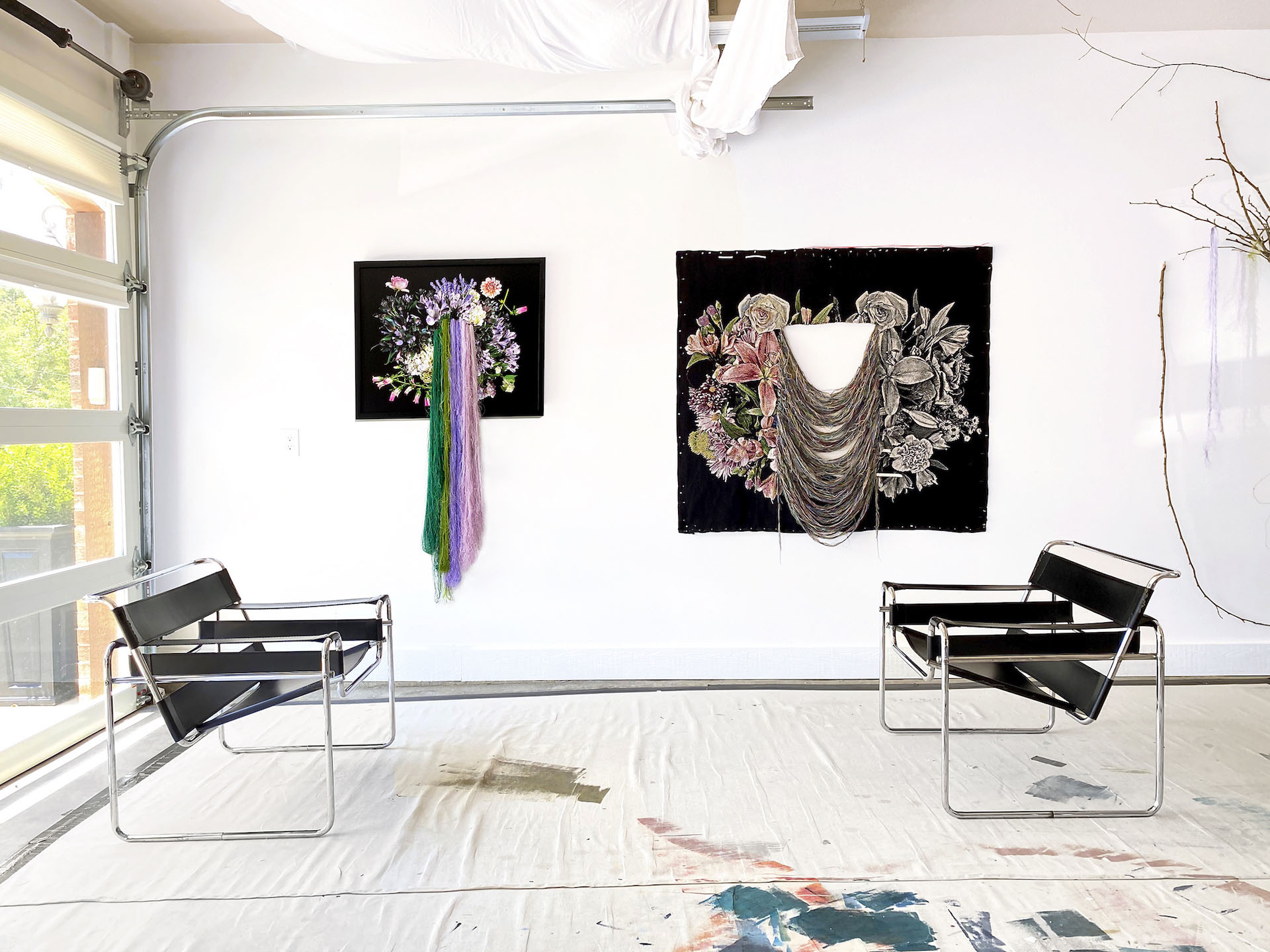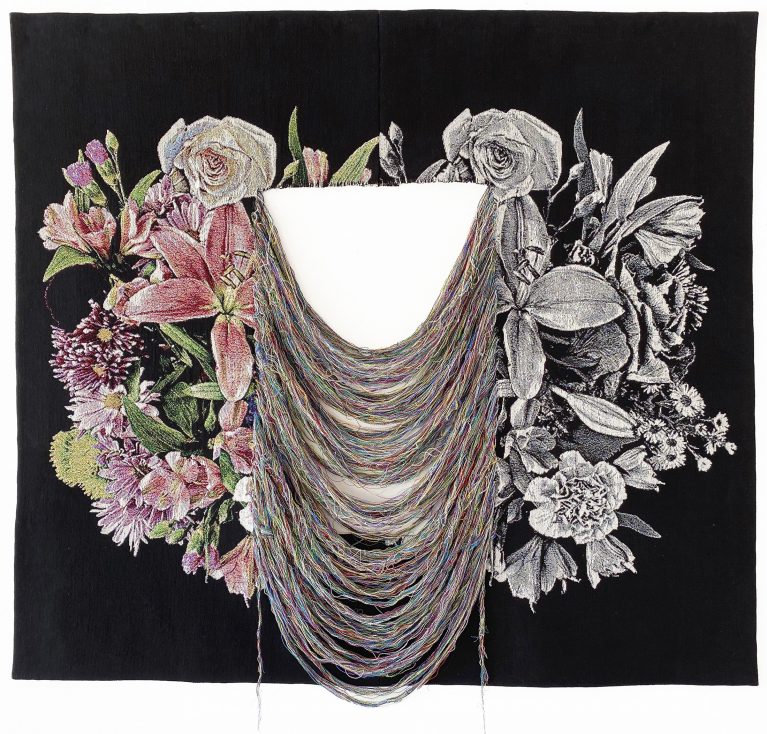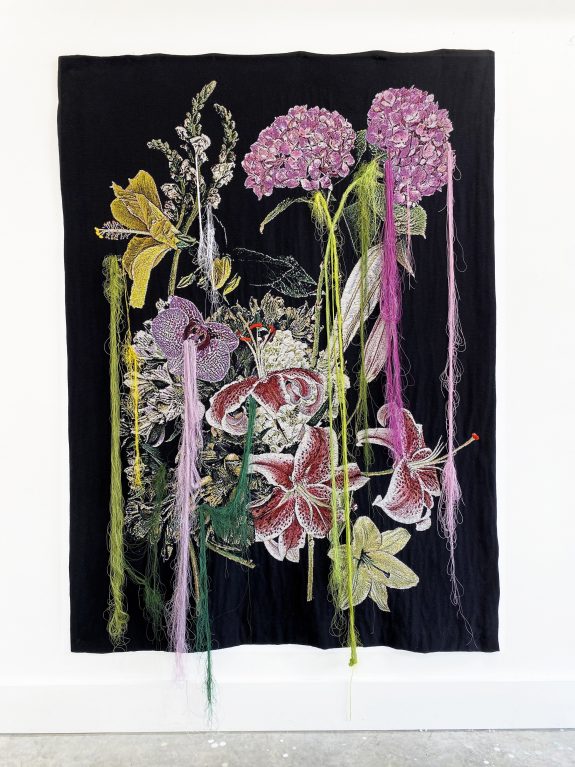
B20 Artist Interview with Heidi Carlsen-Rogers
 B20: Wiregrass Biennial is a juried exhibition that encourages innovative and progressive work and showcases the South’s most talented contemporary artists, illustrating the region’s rich cultural heritage. Selected work utilizes a variety of art forms and media, including paintings, sculptures, mixed media, new media, and installation art. Three jurors chose from a field of over 130 entries for this year’s exhibition — the first virtual exhibition ever for WMA — featuring 39 artists from 11 states.
B20: Wiregrass Biennial is a juried exhibition that encourages innovative and progressive work and showcases the South’s most talented contemporary artists, illustrating the region’s rich cultural heritage. Selected work utilizes a variety of art forms and media, including paintings, sculptures, mixed media, new media, and installation art. Three jurors chose from a field of over 130 entries for this year’s exhibition — the first virtual exhibition ever for WMA — featuring 39 artists from 11 states.
We’ll be sharing a series of interviews with B20 artists during the run of the exhibition, and our fourteenth is from Bella Vista, Arkansas-based artist, Heidi Carlsen-Rogers.
Where do you find inspiration for your artistic practice?
The natural environment is by far the greatest influence in my work, but I find incredible inspiration in my everyday experience & surroundings.
I like to practice “slow looking” and deeply observe what’s around me – and always gathering visual input, listening, absorbing how places or things feel.
I tend to be curious about everything and love learning how things work, how people think, what drives us as human beings.
Hiking in the woods, hearing a TED talk, reading someone’s personal story, standing in the middle of an art museum are all sources of inspiration that get rolled into my work on some level or another.
What draws you to nature, specifically?
Nature is a place of beauty, wonder, the divine.
Being immersed in the natural environment is such a sensory experience – observing the changing light, shadows, subtle movement, sounds, color, life cycles in nature are an endless source of inspiration, rich in metaphor and has always been a point of origin for my work.
I also feel a strong sense of place and belonging when I’m outside or working with natural elements like flowers.
There’s an awareness of my connectedness with others – how we share the same sky and walk on the same ground – being in nature makes me feel more connected to our world in general.
What inspired you to move from abstract painting to floral photography?
 In 2016, I started feeling creatively blocked in regard to my painting. As part of my creative practice up until this time, I photographed in order to document what I saw in my surroundings – capturing images of the landscape, color, texture, shadows – but I used my camera strictly as a “sketch book” & inspiration for paintings, not for the photos themselves.
In 2016, I started feeling creatively blocked in regard to my painting. As part of my creative practice up until this time, I photographed in order to document what I saw in my surroundings – capturing images of the landscape, color, texture, shadows – but I used my camera strictly as a “sketch book” & inspiration for paintings, not for the photos themselves.
During this transition period, I started photographing cultivated flowers, weeds, foliage & wildflowers I found growing on the side of the road. I was like an obsessed botanist, photographing over 7000 flowers in the first few years.
Early on, I began placing the flowers on black backgrounds and photographing them formally in my studio or outside. The dark grounds are meant to emphasize importance, value – and give a fragile & delicate flower more perceived power & agency.
Looking through a lens at something so closely is a very intimate act – it was like taking portraits in a way – you really begin to build a relationship & gain understanding about your subject.
The more I photographed the flowers, the more I began to make connections in my mind about new concepts I wanted to work on. So, I stopped painting and focused on the photographs exclusively to learn how I could speak & create through them. It was really a natural shift for me as I look back on it.
Can you tell us more about your work in B20: Wiregrass Biennial?

The name of this piece is called Garden (by a thread), part of a new series where I’m exploring areas of our world that are fragile, fraying or coming apart.
I’m trying to represent in a visual way how our environmental, social and political landscapes are weakening.
This particular work is comprised of one of my floral photographs printed on metal, with thick tendrils of thread spilling out from the center of the piece – as if nature itself is unravelling.
The tendrils comprise of hundreds of yards of silk, cotton, and rayon thread – each is hand-mixed and color matched to the flowers in the photograph; up close you can see the subtle shift in thread colors.
I was thinking about the metaphor of a garden, idyllic & beautiful – but at the moment, the garden is unwell. I was trying to create a sense that flowers themselves or the environment around the flowers are weeping or disintegrating.
Flowers in my work represent our humanity, ideas of sacredness, resiliency and hope – with this piece they reflect the hope of an optimistic outcome, a return to connectedness & well-being.
What made you think to combine thread with your photographs? How long has that been a part of your practice?
 Using thread is a new medium for me. I’ve been working with it for less than a year and I’m still testing ways to combine it with my photographic work.
Using thread is a new medium for me. I’ve been working with it for less than a year and I’m still testing ways to combine it with my photographic work.
The meaning & function of thread reinforced what I had been thinking about – how I feel things are coming undone in our natural, social & political landscapes.
Thread is something that can reconnect or repair things that are damaged or torn; there is also the idea of something being “threaded” or woven through – the universalness of thread as a common connector.
On a tactile level, I’m very drawn to the delicacy of the strands and the way it feels in my hand – & the color range is incredible.
So, the meaning and material itself really aligned, making thread a perfect material to start incorporating into my new work.
How is your work highlighting and exploring current events – the tensions and complexities of today?
 My current series (By a Thread), is a direct comment on what I observe happening in our social, political and environmental fronts.
My current series (By a Thread), is a direct comment on what I observe happening in our social, political and environmental fronts.
I have a deep concern for our well-being as a culture – with so many forms of injustice, the growing lack of empathy and love towards our fellow humans, disregard for our environment, etc. Those realities weigh heavily on me.
In my art, I want to approach topics in our culture that are a bit uncomfortable – about what is damaged and broken, but in a gentle way. In my case, I use the beauty and familiarity of flowers as a bridge leading into a deeper subject.
I believe ongoing dialogue can lead to understanding, re-building of empathy – and cultivate an environment where mending, healing and change can manifest.
Because of the opportunity dialogue provides, I don’t want my work to be repellant, but rather a catalyst to draw someone in closer. Removing barriers that block productive conversation is important in my work – flowers help me to create that interaction.
Especially in my current series, where floral photographic tapestries are being dismantled or mounds of thread are being added to flower imagery; I want to facilitate both a conversation and a pause – a moment of self-reflection to consider this question: Are we contributing to the mending or fraying of our world?
How does living and working in the South impact your artistic practice?
Moving to NW Arkansas from Chicago 12 years ago, really shifted not only my environment, but expanded my perspective on many levels.
There is a beautiful rhythm in Arkansas and the Southern culture that I’ve experienced.
Slowing down, savoring of the moment, and living in close proximity to the natural environment helped be more present to my surroundings and hone my observation skills as an artist. Gaining the ability to notice details I would have previously overlooked has been critical, as those nuances have become catalysts for my work.
I especially love the openness and the willingness for people to take time to share their stories. This influenced my own daily journaling practice – helping me dig into a deeper well of reflection and creative resource that I hadn’t plugged into prior.
Specific to our region in the South, Crystal Bridges Museum of American Art opened in 2011 – only 10 miles from my art studio. Having intimate access to world class art and artists through the museum has been aspirational and pivotal in developing my creative outlook and voice.

What’s next? Is there anything new you are working on that you’d like to share with us?
I have a full sketchbook of work that I’m planning to execute for the By a Thread series – some larger scaled tapestries & more complex pieces in general. I always like to push an idea as far as possible to see what else might evolve. I’ve been developing some ideas around a public component as well where the community is involved in a mending project.
And, I’m also working on some new photographic floral “still life” pieces with lilies that are exploring themes aging, definitions of “beauty”, with an intergenerational element.
View More Stories
